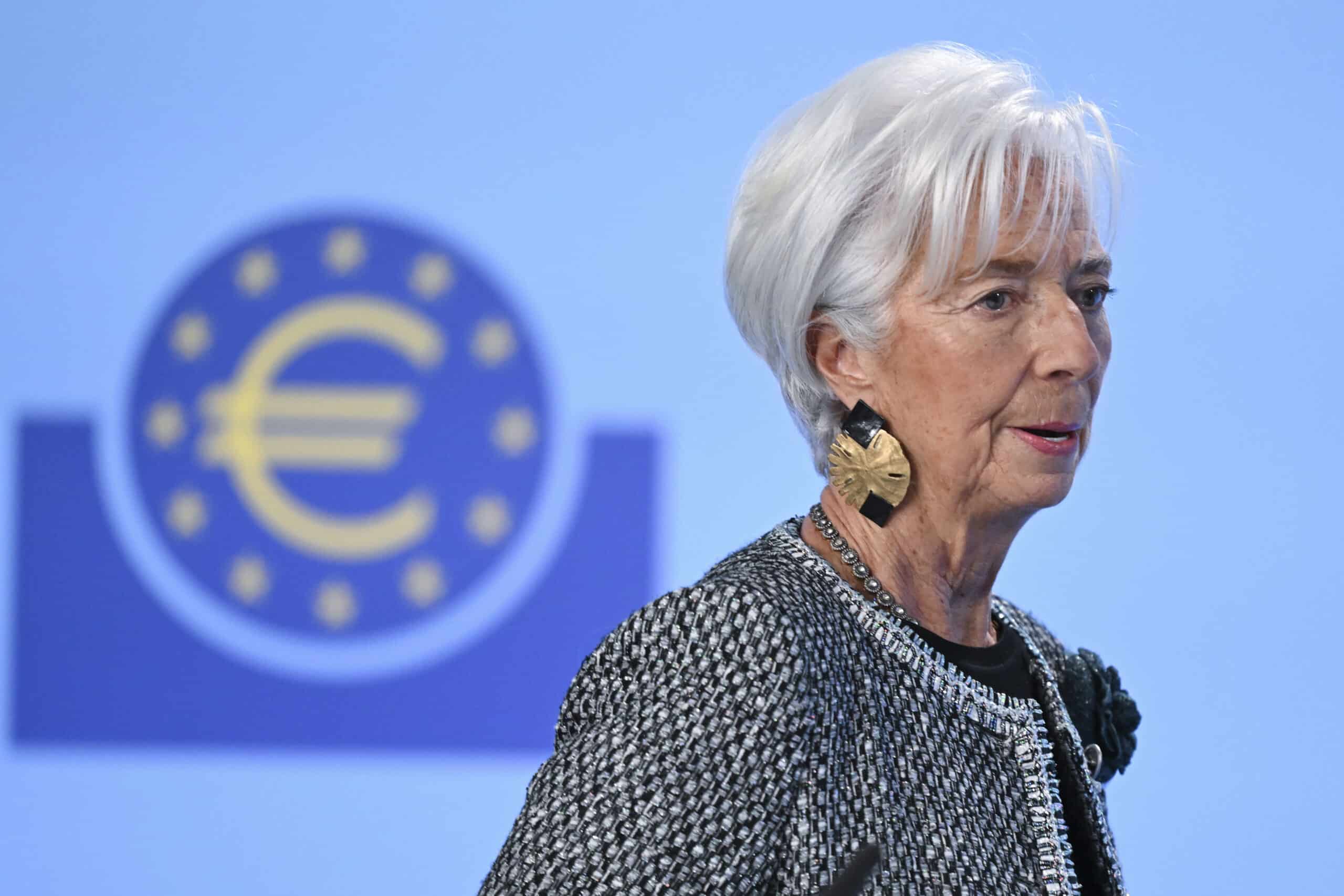ECB cuts rates again as eurozone hit by economic, political woes

President of the European Central Bank Christine Lagarde arrives for a press conference at the ECB headquarters in Frankfurt, Germany, Thursday, Dec. 12, 2024. (Arne Dedert/dpa via AP)
Frankfurt, Germany — The European Central Bank cut interest rates again Thursday, citing a worsening growth outlook and slowing inflation, with political turmoil in the eurozone adding to the troubled picture.
The central bank for the 20 countries that use the euro reduced its key deposit rate a quarter point to three percent, as widely expected.
It was the ECB’s third cut in a row and fourth since June, when it kicked off its current easing cycle.
READ: Amid weak eurozone and political turmoil, ECB to cut rates again
After hiking borrowing costs from mid-2022 to combat runaway energy and food costs, policymakers have turned their attention to lowering rates as inflation eases and the eurozone economic outlook darkens.
Worse-than-expected data, as well as the Swiss central bank making an unexpectedly large rate reduction earlier Thursday, had fuelled speculation the ECB could deliver a hefty, half-percentage-point cut for the first time in the easing cycle.
But rate-setters opted to continue cutting at the same pace, with a quarter-point reduction, as inflation remains stubborn, having rebounded back above the ECB’s two-percent target in November.
The slowdown in inflation is “well on track”, the ECB said in a statement announcing its decision.
It cut its inflation forecasts for 2024 to 2.4 percent and to 2.1 percent in 2025 — down 0.1 percentage point in each case.
“Most measures of underlying inflation suggest that inflation will settle at around the governing council’s two-percent medium-term target on a sustained basis,” it said.
READ: Global stocks mostly fall ahead of ECB, US inflation data
But the central bank added that it now expects a “slower economic recovery” than several months ago, and cut its growth forecasts slightly for 2024 and the following two years — to 0.7 percent, 1.1 percent and 1.4 percent respectively.
The statement dropped previous language on keeping rates “sufficiently restrictive for as long as necessary”, saying instead that it was “determined to ensure that inflation stabilizes sustainably” around the ECB target.
Investors are now set to follow ECB President Christine Lagarde’s press conference for clues about the pace going forward, with analysts predicting she may offers hints of cuts in the months ahead.
Trump jitters
The move by the Swiss National Bank earlier Thursday, which brought its main rate down to 0.5 percent, reflected “uncertainty” about the economic outlook between political upheaval in the United States and Europe.
ECB officials have likewise raised concerns about the weakening growth outlook in the single-currency area, signaling a shift away from being laser-focused on bringing down inflation.
Eurozone inflation peaked at 10.6 percent in late 2022 after surging in the wake of Russia’s full-scale invasion of Ukraine and amid post-pandemic supply chain woes.
It fell back under the ECB’s two-percent target in September but rebounded in subsequent months, reaching 2.3 percent in November.
Political headwinds are adding to the tricky terrain that rate-setters will have to navigate.
Germany is heading for elections in February, seven months earlier than scheduled, after the collapse of Chancellor Olaf Scholz’s long-troubled coalition last month.
Even before the latest turbulence, the eurozone’s biggest economy was struggling with a manufacturing slowdown, and its anaemic growth rates are weighing down the broader single currency area.
Meanwhile in France, the eurozone’s second-biggest economy, the government of Michel Barnier was ousted last week in a historic no-confidence vote, deepening the country’s growing political and financial chaos.
Adding to the troubled picture is Donald Trump’s impending return to the White House.
He has threatened to slap hefty new tariffs on all imports to the United States, and has previously singled out the EU as the bloc runs a sizeable trade surplus with the world’s biggest economy.
The ECB’s decision comes a week ahead of the US Federal Reserve’s next rate-setting meeting on December 17 and 18, with markets betting on another cut in borrowing costs.